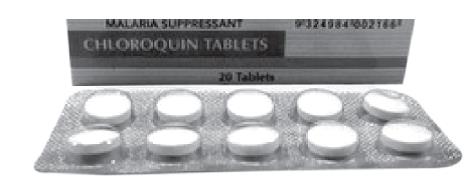RAPID DIAGNOSTIC TEST (RDT) KIT FOR DIAGNOSIS OF MALARIA
Name the appropriate program under which this is used.
National Vector Borne Disease Control Program (NVBDCP)
What is the interpretation of the test if Only one line appears?
• The test is negative for Plasmodium.
Two lines appear:
• If the second line is at ‘pf’: The test is positive for Plasmodium falciparum.
• If the second line is at ‘pan’: The test is positive for plasmodium other than P falciparum, mostly P vivax
Three lines appear
• Mixed infection of P falciparum and other species esp vivax
No line appears:
• Invalid test, discard the kit.
Mention the advantages of RDT for malaria over microscopy.
• Quick to perform (about 20 minutes for most tests)
• Sensitive in detecting P falciparum, which causes severe malaria
• Does not require skilled laboratory technicians and can be used by health workers and nonhealth personnel after a few hours of training
• Does not require electricity or laboratory equipment
Mention the disadvantages of RDT for malaria over microscopy.
• More expensive, hence less cost-effective
• Higher percentage of false positives and false negatives as only the antigen is detected
• Presently only P. falciparum kits are available under NVBDCP
• The kits need to be stored at the prescribed temperature and to be used before the expiry date
• There is a need to monitor the sensitivity of the kits at regular intervals
• Antigens can persist for up to 4 weeks after clearance of asexual parasitaemia resulting in false positive test results
Can RDT be routinely used instead of microscopy?
• No, RDT cannot replace microscopy as there is a higher percentage of false positives and false negatives, i.e., the sensitivity and specificity are lower than microscopy.
• Microscopy can help in quantifying parasite load.
• RDT is to be used only where microscopy is not available.
• The interpretation of the test is to be done after considering the clinical and epidemiological features of the patient. 9
• As antigens can persist for up to 4 weeks after clearance of asexual parasitaemia resulting in false positive test results. If a patient, who has been treated, is febrile within one month after the treatment and the RDT is positive, the malaria diagnosis should be confirmed by microscopy before treatment is started.
CHLOROQUINE
Figure 10.11
Figure 10.11 displays a kit of chloroquine tablets.
Against which disease is it used under National Health Program?
It is used for the treatment of malaria under NVBDCP.
What is the dosage?
25 mg per kg of body weight, given over 3 days
What are the toxic effects of the drug?
• Nausea and vomiting
• Blurring of vision
What is the recommendation regarding use of the drug in treatment of falciparum malaria?
Treatment of P. falciparum cases in all States except North-Eastern States:
Artemisinin combination therapy (ACT): Artesunate daily for 3 days plus Sulfadoxine – pyrimethamine on day 1 and primaquine on day 2
ACT-SP has been made available in different coloured blister packs for different age groups of patients
Treatment of uncomplicated P. falciparum cases in NE States:
Due to signs of P. falciparum developing resistance to ACT-SP in some areas in the NE States, Artemether-lumefantrine (ACT-AL) has been introduced as the ACT combination for treatment of P. falciparum cases in NE States under the national drug policy.
It is available as a co-formulation with each tablet containing 20 mg artemether and 120 mg lumefantrine 11
References:
1. WHO, 2017. Malaria rapid diagnostic test products: Suggested use of terms, requirements and preferences for labelling and instructions for use. Geneva. Licence: CC BYNC-SA 3.0 IGO
2. GOI, 2016. Operational Manual for Malaria Elimination in India 2016, Directorate of National Vector Borne Disease Control Programme DGHS Ministry of Health & Family Welfare, New Delhi
3. Tiwari P. Mastering Practicals – Community Medicine. 2nd ed. Editors: Tiwari P, Tiwari S; Publishers: Wolters Kluwer (India) Pvt Ltd. Gurugram
Terms used in Family Health Study: Definitions and Explanations: http://www.ihatepsm.com/blog/terms-used-family-health-study-definitions-...
